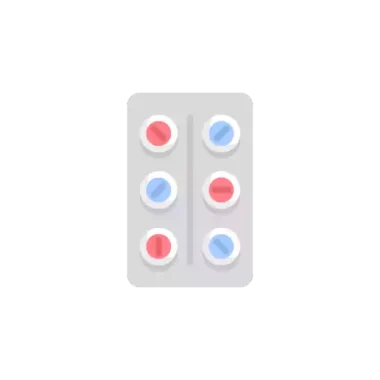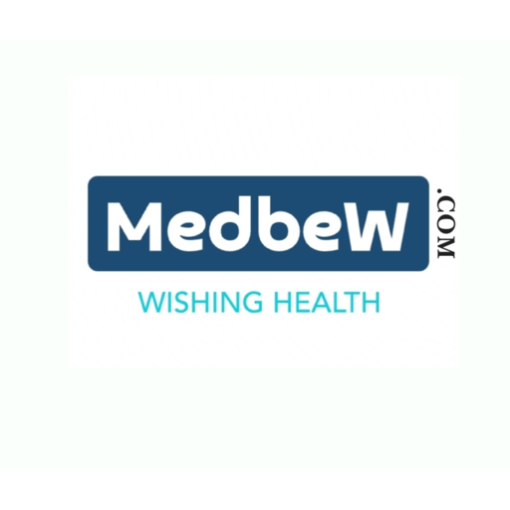Composition Tobramycin (0.3% w/v)
Rx Prescription Required
Pack packet of 5 ml Eye/Ear Drops
Storage Store below 30°C
Chemical Class Aminoglycosides
Action Class Aminoglycosides
Habbit Forming No
Manufacturer Salvador Visiontech
Manufacturer address shanti kunj, 124, 5th ln, dadar(e, mumbai, maharashtra 400014

Nayatob 0.3% Eye/Ear Drops
Nayatob 0.3% Eye/Ear Drops is an antibiotic instilled in the eye to treat bacterial infections of the eye (e.g., conjunctivitis). Additionally, it may be instilled in the ear to treat bacterial infections of the ear (e.g., otitis externa).
Basic Info
Description
Nayatob 0.3% Eye/Ear Drops also helps to prevent an infection after eye/ear injury or surgery. It fights the infection by stopping the growth of bacteria. This helps to resolve your symptoms and cure the underlying infection. Follow your doctor’s instructions precisely for administering this medicine in the eye/ear. Wait for at least 5 minutes before applying any other medication to the same eye/ear. It should be used regularly at evenly spaced time intervals as prescribed by your doctor. Do not skip any doses and finish the full course of treatment even if you feel better. Stopping the medicine too early may lead to the infection returning or worsening.
It is a broad-spectrum type of antibiotic effective in killing many types of bacteria. However, it will not work for other types of eye/ear infections (e.g., viral) and therefore, should only be used if prescribed by your doctor. Unnecessary use of any antibiotic can lead to a decrease in its effectiveness in the future.
Common side effects seen with this medicine include temporary eye/ear irritation, burning sensation, itching, and redness after administration. Consult your doctor if these side effects persist or if your condition worsens. It may cause some short-term blurring of vision. Therefore, do not drive immediately after administering this medicine in the eye. Contact lenses should not be worn while you are using this medicine for an eye infection.
Uses
Bacterial eye / ear infections
Treatment of Bacterial eye infections
How To Use
This medicine is for external use only.Take it in the dose and duration as advised by your doctor. Check the label for directions before use. Hold the dropper close to the eye/ear without touching it. Gently squeeze the dropper and place the medicine inside the lower eyelid or ear. Wipe off extra liquid.
MOA
Nayatob 0.3% Eye/Ear Drops is an antibiotic. It stops bacterial growth by preventing synthesis of essential proteins required by bacteria to carry out vital functions.
What If
Information not available at the moment. Please check back later.
Drug Tips
Your doctor has prescribed Nayatob 0.3% Eye/Ear Drops Eye/Ear Drop to treat bacterial infections of the eye/ear.
Do not skip any doses and finish the full course of treatment even if you feel better.
Make sure to use within 4 weeks of opening the bottle.
Can I stop taking Nayatob 0.3% Eye/Ear Drops when I feel better?
Do not skip any doses and finish the full course of treatment even if you feel better.
Nayatob 0.3% Eye/Ear Drops may cause damage to cornea on long-term use.
Apply pressure on the corner of the eye (close to the nose) for about 1 minute immediately after instilling the drop.
Wait for at least 5-10 minutes before delivering the next medication in the same eye to avoid dilution.
Stinging sensation may occur for 1-2 mins. Notify your doctor if it persists for longer.
Make sure to use it within 4 weeks of opening the bottle.
Faqs
Q. Is Nayatob 0.3% Eye/Ear Drops effective?
Nayatob 0.3% Eye/Ear Drops is effective if used in the dose and duration advised by your doctor. Do not stop taking it even if you see improvement in your condition. If you stop using Nayatob 0.3% Eye/Ear Drops too early, the symptoms may return or worsen.
Q. I feel better now, can I stop using Nayatob 0.3% Eye/Ear Drops?
No, you should not stop using Nayatob 0.3% Eye/Ear Drops suddenly without talking to your doctor. This is because your symptoms may worsen and your infection may return. You may experience improvement in your symptoms before the infection is completely cleared. Therefore, for better results, it is advised to continue your treatment for the prescribed duration. Stopping the medication too early could allow the spread of the infection and hence prevent complete healing.
Q. What should I do if I forget to use Nayatob 0.3% Eye/Ear Drops?
If you forget to use Nayatob 0.3% Eye/Ear Drops, do not worry and continue using Nayatob 0.3% Eye/Ear Drops as soon as you remember. However, if you are not sure and have any other doubts, please consult your doctor.
Q. In which conditions is the use of Nayatob 0.3% Eye/Ear Drops avoided?
Use of Nayatob 0.3% Eye/Ear Drops should be avoided in patients who are allergic to Nayatob 0.3% Eye/Ear Drops or any of its components. However, if you are not aware of any allergy or if you are using Nayatob 0.3% Eye/Ear Drops for the first time, consult your doctor.
Q. What are the instructions for the storage and disposal of Nayatob 0.3% Eye/Ear Drops?
Keep Nayatob 0.3% Eye/Ear Drops in the container or the pack it came in, tightly closed. Store it according to the instructions mentioned on the pack or label. Dispose of the unused medicine. Keep it away from children and other people to avoid any misuse.
Q. Does Nayatob 0.3% Eye/Ear Drops have a steroid in it?
No, Nayatob 0.3% Eye/Ear Drops alone does not have steroids in it. It is an antibiotic, which means that it is effective against bacterial infections. It is not effective against viral or fungal infections and hence should not be used in these kinds of infections. Nayatob 0.3% Eye/Ear Drops may be combined with steroids such as dexamethasone.
Q. What bacteria does Nayatob 0.3% Eye/Ear Drops kill?
Nayatob 0.3% Eye/Ear Drops is effective against a wide range of bacteria. Nayatob 0.3% Eye/Ear Drops must be used only against susceptible bacteria. A whole gamut of bacteria that can be killed by Nayatob 0.3% Eye/Ear Drops includes S. Aureus and S. epidermidis, some species of Streptococci, Pseudomonas aeruginosa, Escherichia coli, Klebsiella pneumoniae, Enterobacter aerogenes, Proteus mirabilis, Morganella morganii, most Proteus vulgaris strains, Haemophilus influenza, and H. aegyptius, Moraxella lacunata, Acinetobacter calcoaceticus, and some Neisseria species. Your doctor will evaluate whether this medicine is suitable for your condition.
Q. How long should you use Nayatob 0.3% Eye/Ear Drops?
The doctor will decide the duration of treatment which will depend on the severity of infection. For instance, if you have mild to moderate eye infection, your doctor will advise 1-2 eye drops, 4 times a day, usually. In severe infections, you may be prescribed 2 drops every hour. Do not use more or less of it or use it more often than prescribed by your doctor. You should use it exactly as prescribed by your doctor.
Q. How should Nayatob 0.3% Eye/Ear Drops be used?
You should wash your hands before using the eye drops. Avoid touching the dropper tip against your eye or anywhere else. Tilt your head slightly and instill one drop. Close your eyes for 2 or 3 minutes with your head tipped down, avoid blinking or squinting. Gently press your finger to the inside corner of the eye for about 1 minute, to keep the liquid from draining into your tear duct. If you use more than one drop, wait about 5 minutes between the drops. Wait at least 10 minutes before using any other eye drops your doctor has prescribed.
Benifits
In Bacterial eye / ear infections
Nayatob 0.3% Eye/Ear Drops is an antibiotic medicine. It works by stopping the growth of the bacteria that is causing the infection. It helps relieve symptoms such as pain, redness, itching, soreness or ear discharge caused due to eye/ear infections. The dose and duration of treatment will be decided by your doctor based on your condition. Make sure you complete the full course of treatment. This will ensure that the infection is completely cured and prevent it from returning.
In Treatment of Bacterial eye infections
Nayatob 0.3% Eye/Ear Drops is an antibiotic medicine. It works by stopping the growth of the bacteria that is causing the infection. It helps relieve symptoms such as pain, redness, itching, or soreness caused due to eye infections. The dose and duration of treatment will be decided by your doctor based on your condition. Make sure you complete the full course of treatment. This will ensure that the infection is completely cured and prevent it from returning.show moreshow less
Side Effects
Most side effects do not require any medical attention and disappear as your body adjusts to the medicine. Consult your doctor if they persist or if you’re worried about them
Eye itching
Eye redness
Burning sensation
Eye irritation
Application site reactions (burning, irritation, itching and redness)
Safety Profile
Alcohol:
No interaction found/established
Pregnancy:CONSULT YOUR DOCTOR
Nayatob 0.3% Eye/Ear Drops is unsafe to use during pregnancy as there is definite evidence of risk to the developing baby. However, the doctor may rarely prescribe it in some life-threatening situations if the benefits are more than the potential risks. Please consult your doctor.
Breast feeding:SAFE IF PRESCRIBED
Nayatob 0.3% Eye/Ear Drops is safe to use during breastfeeding. Human studies suggest that the drug does not pass into the breastmilk in a significant amount and is not harmful to the baby.
Driving:SAFE
Nayatob 0.3% Eye/Ear Drops does not usually affect your ability to drive.
Kidney:
No interaction found/established
Liver:
No interaction found/established
Refferences
MacDougall C, Chambers HF. Aminoglycosides. In: Brunton LL, Chabner BA, Knollmann BC, editors. Goodman & Gilman’s: The Pharmacological Basis of Therapeutics. 12th ed. New York, New York: McGraw-Hill Medical; 2011. p. 1516.
Chambers HF, Deck DH. Aminoglycosides & Spectinomycin. In: Katzung BG, Masters SB, Trevor AJ, editors. Basic and Clinical Pharmacology. 11th ed. New Delhi, India: Tata McGraw Hill Education Private Limited; 2009. p. 812.
Briggs GG, Freeman RK, editors. A Reference Guide to Fetal and Neonatal Risk: Drugs in Pregnancy and Lactation. 10th ed. Philadelphia, PA: Wolters Kluwer Health; 2015. pp. 1371-72.
ScienceDirect. Tobramycin. view
PubChem. Tobramycin. view
Drugs.com. Tobramycin Pregnancy and Breastfeeding Warnings. view






